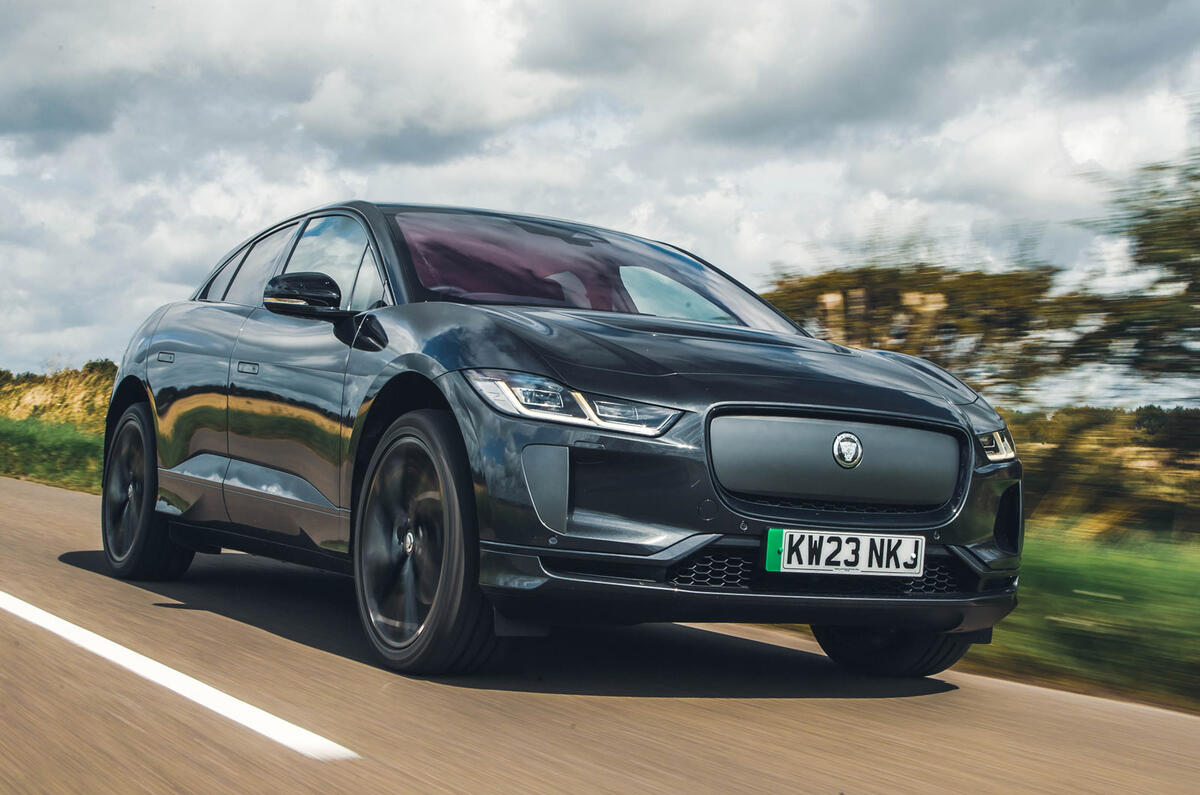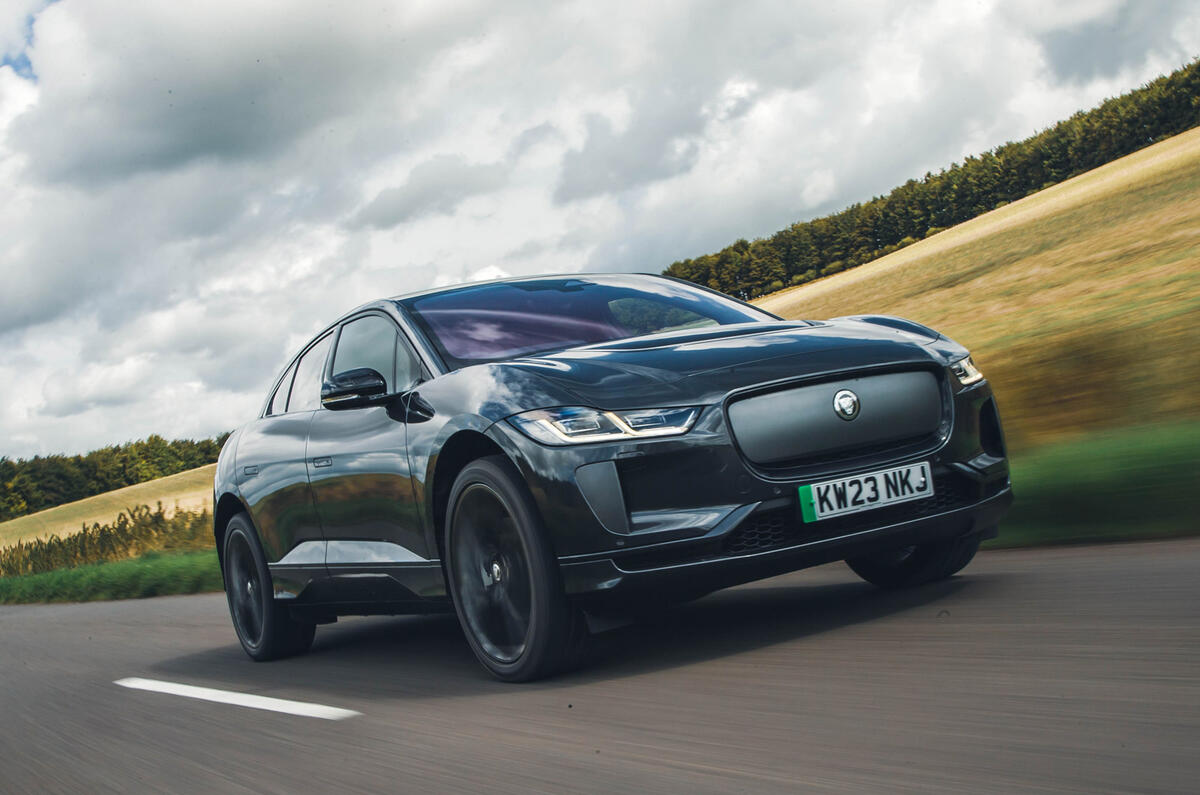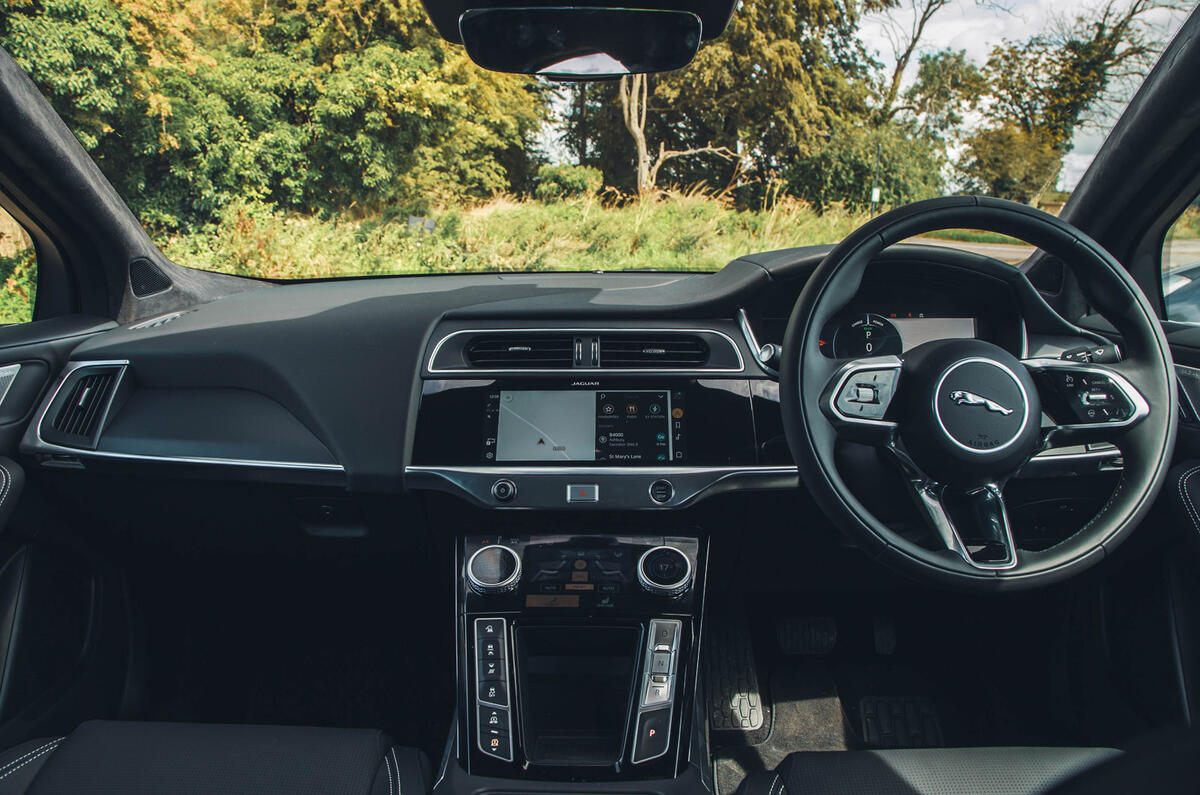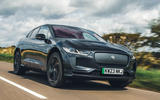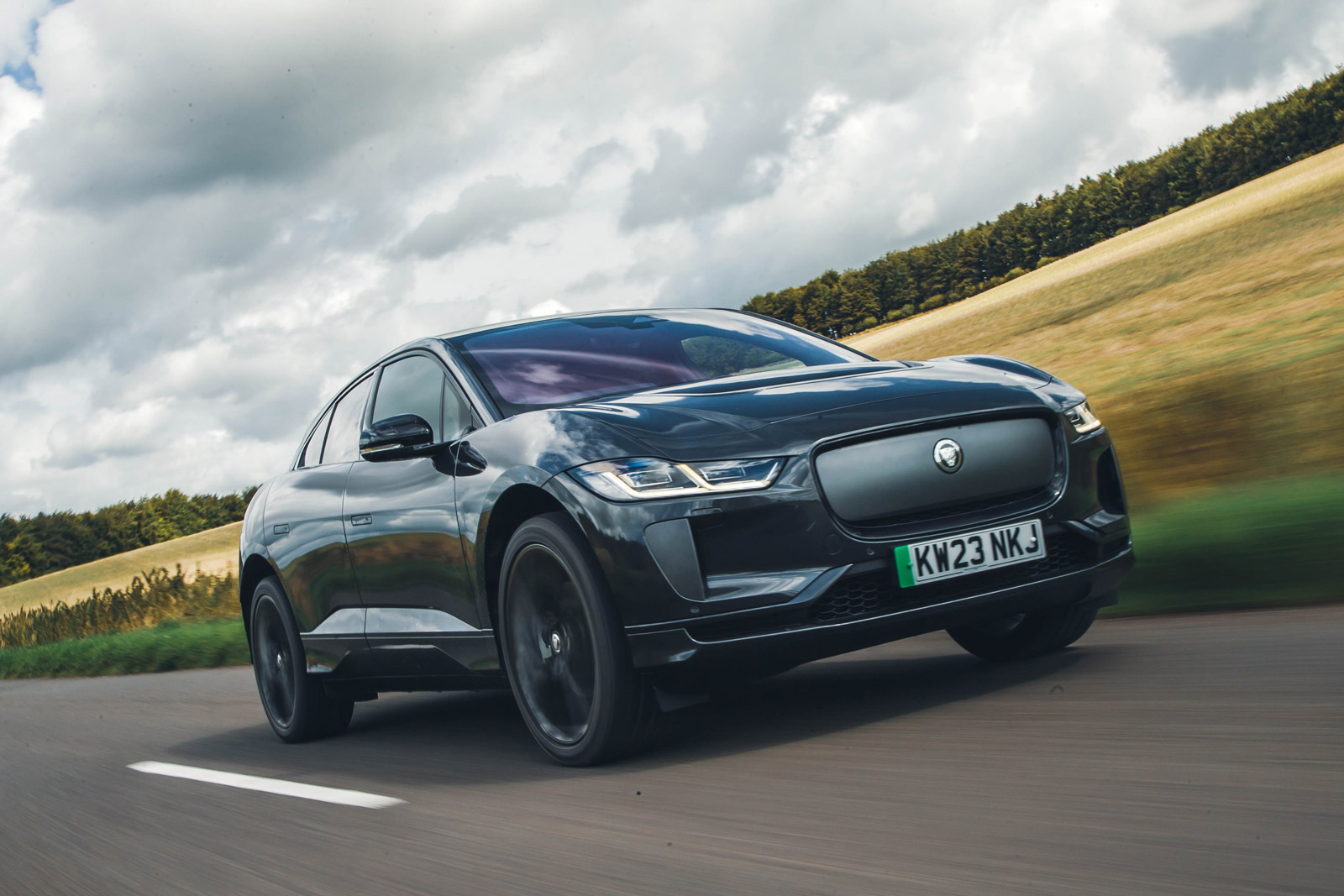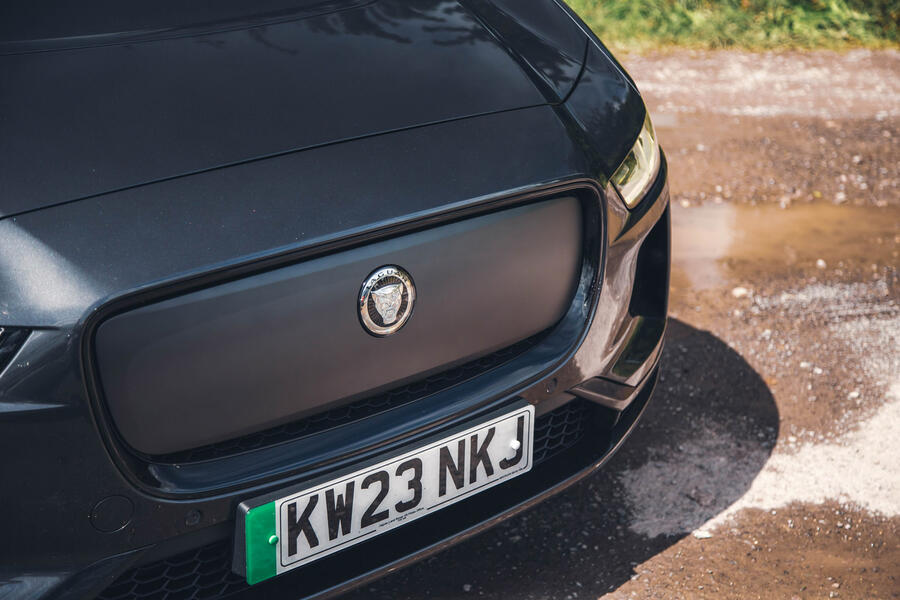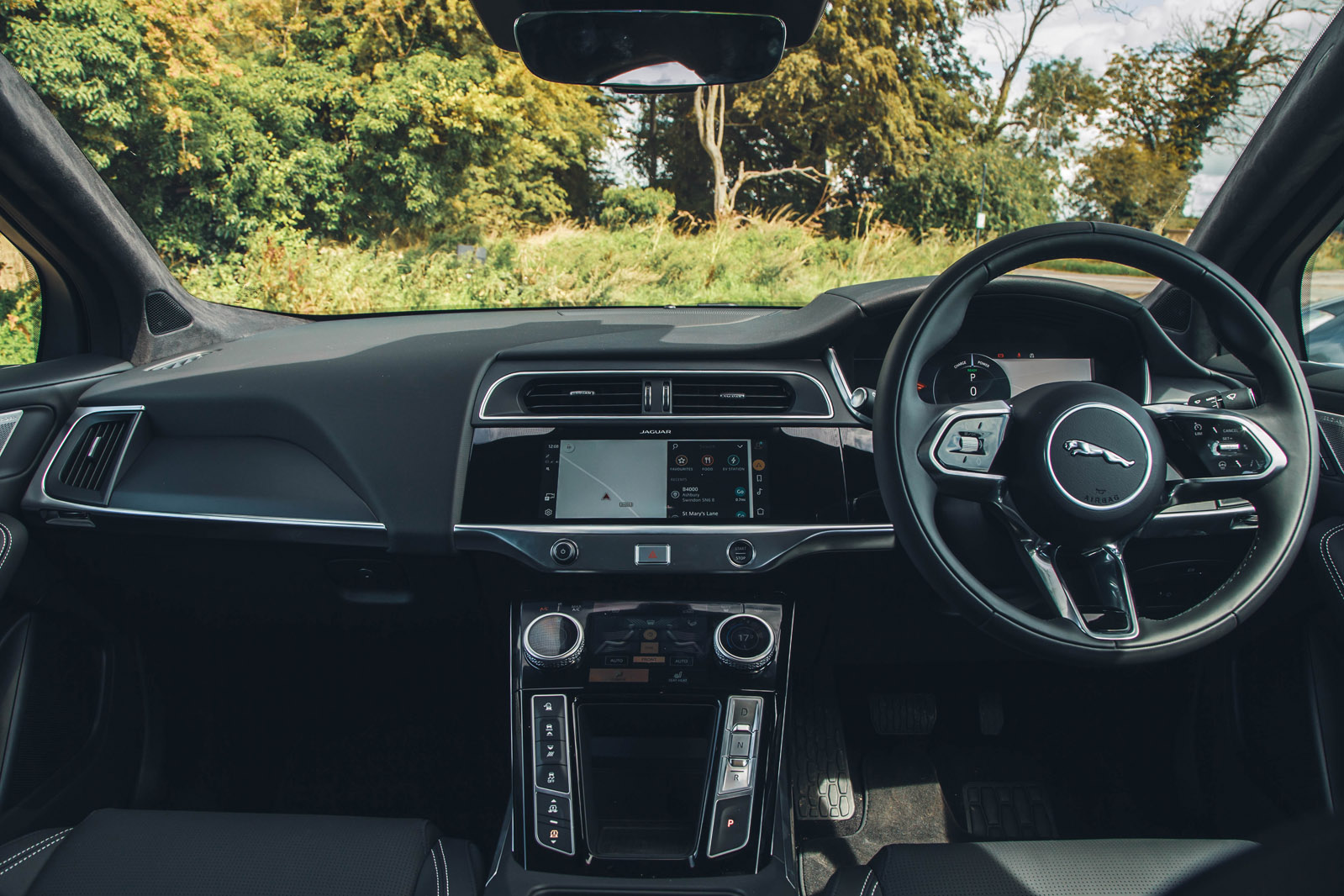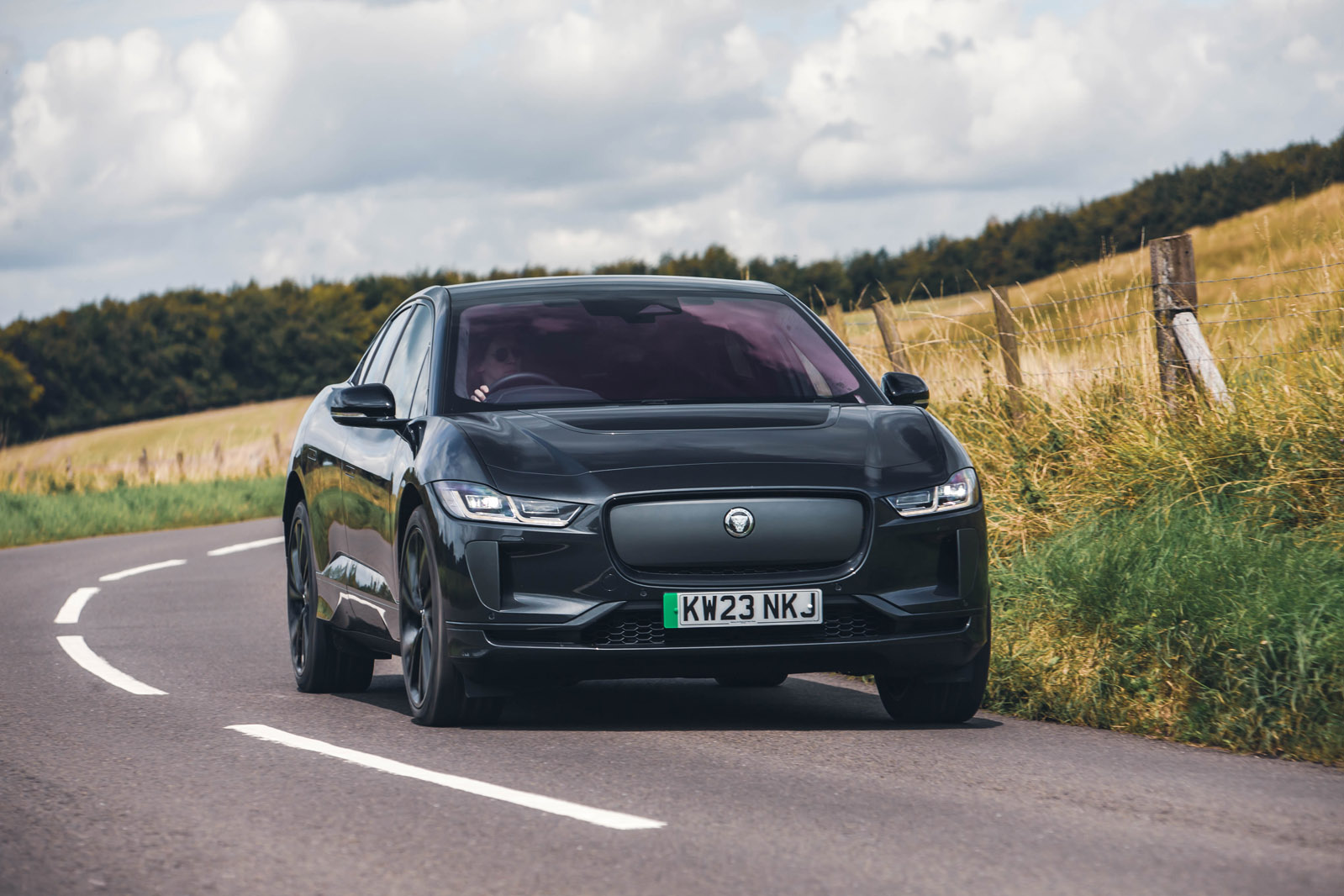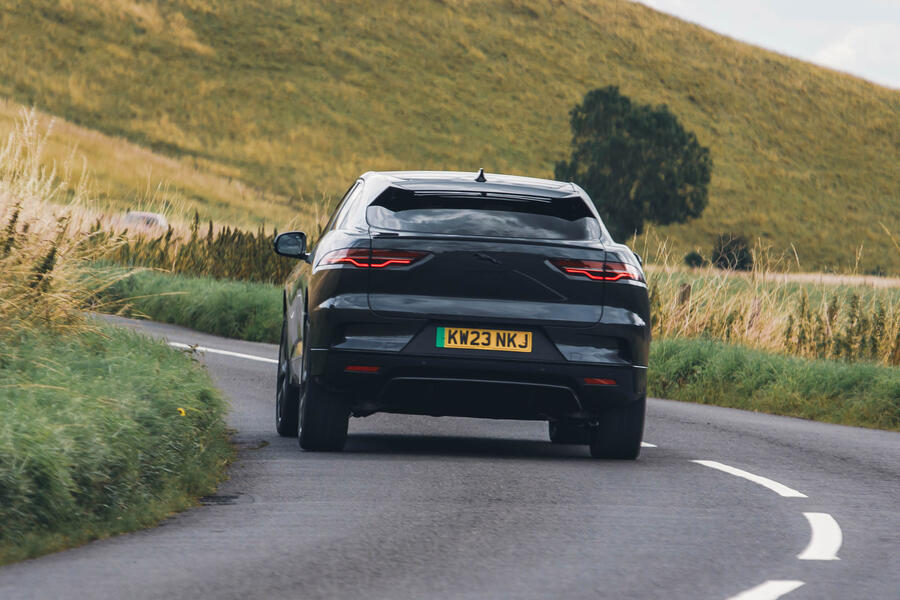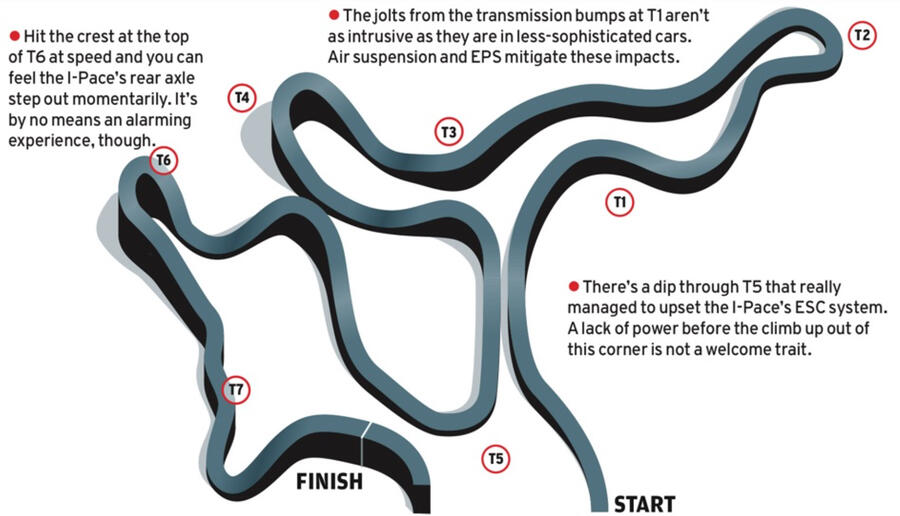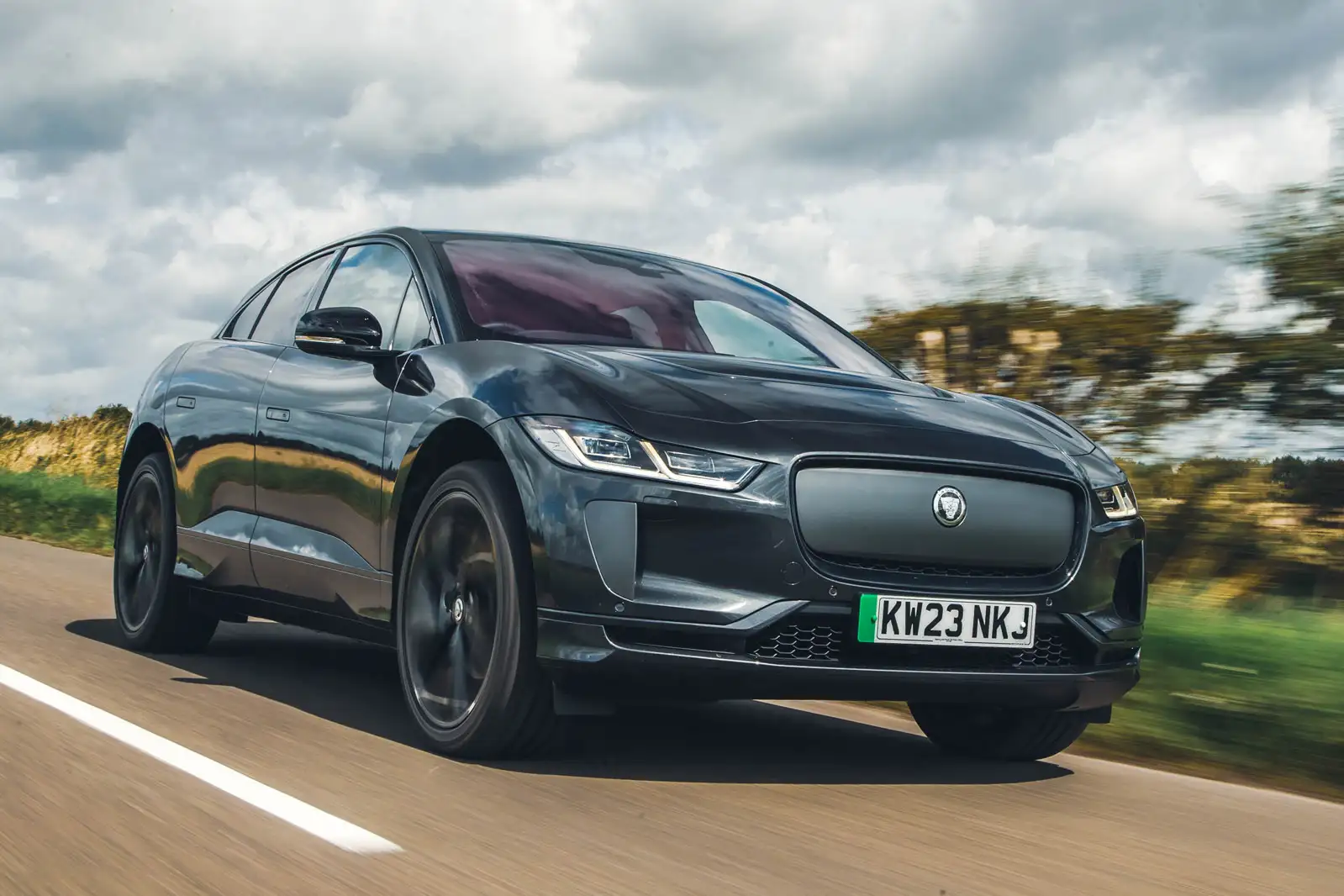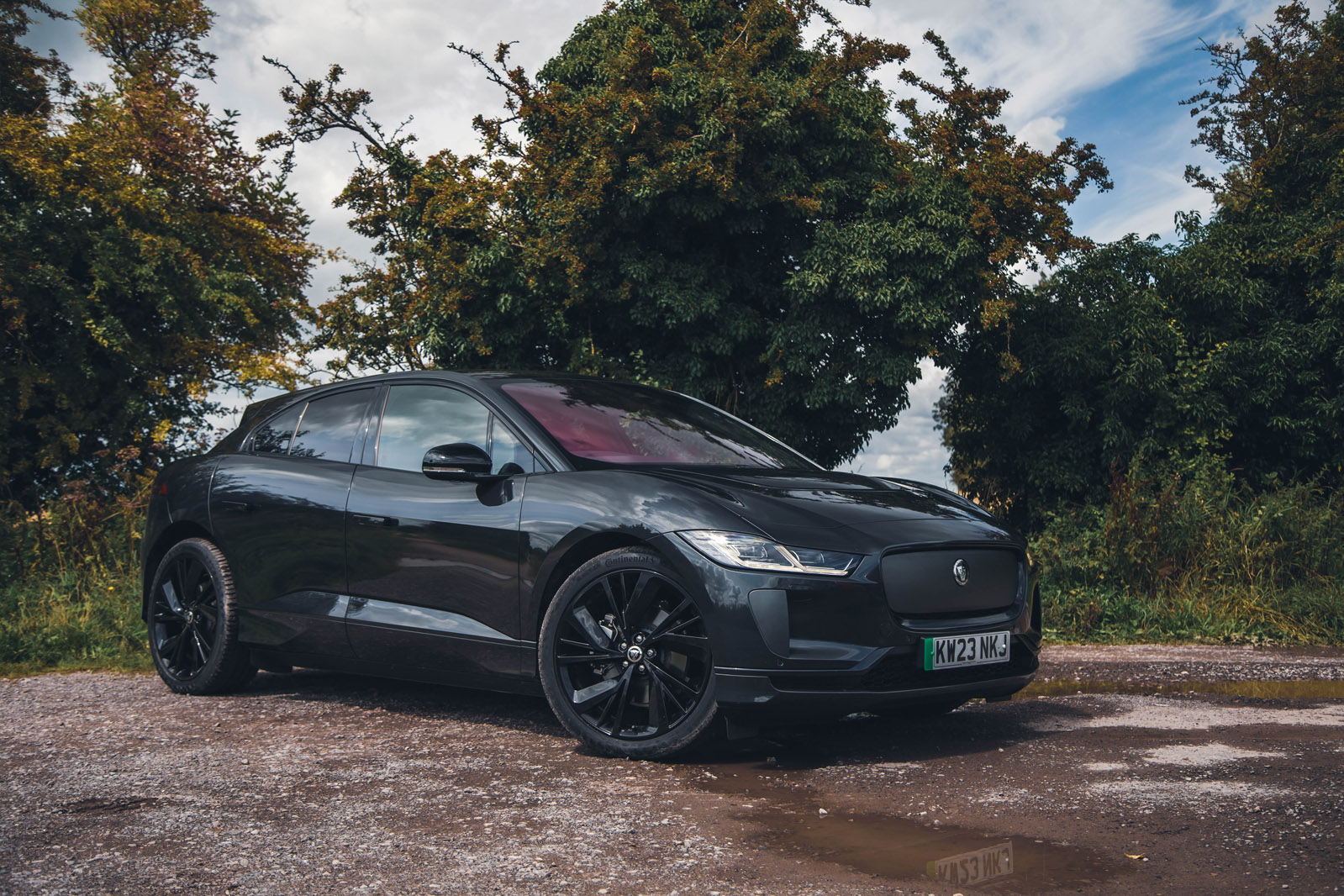“The best Jaguar cabin in years” was how one tester described the Jaguar I-Pace’s interior, a claim that – for the most part – was entirely warranted in 2018 and still mostly holds up today.
Material selection is key here. Gloss black and metal panelling sit alongside leather-upholstered surfaces, physical controls and touchscreens for a sense of slick modern sophistication.
In the past few years, Jaguar has really upped its interiors game, so the facelifted F-Pace and XF do have plusher dashboard materials and there are one or two other material low points among the car’s minor switchgear. These low points are few and far between, however. The I-Pace sets standards on perceived quality and material richness that would impress anyone.
The car’s ergonomics are also very good. Optional ‘performance seats’ provide plenty of lateral support, while their 14-way electronic adjustability and memory settings streamline the process of settling in behind the wheel. They are overkill for an SUV, however, and rather firm, so we’d skip them and save £2500. They are standard on the 400 Sport trim, though.
Those in the back reap the benefits of that cab-forward design and lengthy wheelbase; there are executive saloon levels of leg room on offer, while head room isn’t in short supply even with the fixed panoramic roof optioned. The boot, meanwhile, is a useful 656 litres, while under the bonnet there’s an additional 27-litre storage bin. Good luck fitting anything other than a laptop bag in here, though. It’s worth noting that a Tesla Model S offers more, with a 690-litre boot and a 150-litre storage area at its nose.
Multimedia
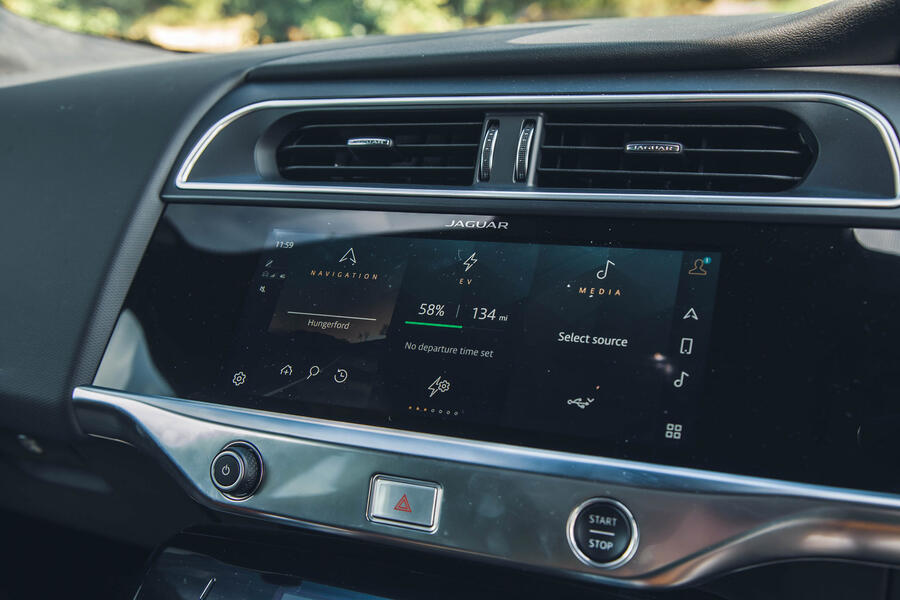
In its five years on sale, the I-Pace hasn’t changed a great deal, but thankfully Jaguar has fundamentally uprated the multimedia system. The laggy, unintuitive system that the car launched with was easily the weakest aspect of the I-Pace’s entire cabin.
The newer Pivi Pro system that’s now quite familiar from JLR products looks slightly squeezed into the I-Pace’s smaller screen, but still works well. It’s fairly (but not perfectly) responsive and the menus logically laid out.
Both Apple CarPlay and Android Auto work wirelessly, and rather than take over the whole show, they integrate neatly with the native interface, for instance showing album art and playback controls on the home screen.
Rich-sounding Meridian sound systems are standard across the board, with an 825W surround sound system available as an option.



